Chapter 9: Using Technology to Enhance BCM Auditing
Technology plays a vital role in streamlining and enhancing the efficiency of the BCM audit process. This chapter explores various technological tools that can be leveraged to achieve a more effective and efficient BCM audit.
Audit Management Software
Audit management software offers a centralized platform for managing various aspects of the BCM audit lifecycle. These software solutions can significantly improve efficiency and collaboration throughout the process. Here are some key functionalities offered by audit management software:
- Document Management: Securely store, organize, and access all relevant BCM documentation, including risk assessments, BIAs, BCPs, and testing records. This facilitates easy retrieval and version control.
- Task Management: Assign tasks and track progress for audit team members, ensuring timely completion of all audit activities.
- Scheduling and Communication: Schedule interviews, meetings, and site visits with stakeholders using integrated calendars and communication tools.
- Risk Assessment and Control Management: Some software integrates with risk assessment tools, allowing for streamlined identification and evaluation of BCM-related risks.
- Non-Conformance and Corrective Action Management: Effectively document identified weaknesses in the BCM program and track the implementation of corrective actions.
- Reporting and Analytics: Generate comprehensive audit reports with findings, recommendations, and supporting evidence. Some tools offer data visualization tools for enhanced reporting.
Collaboration Tools
Collaboration tools facilitate communication and information sharing among the audit team and stakeholders throughout the audit process. These tools can be particularly beneficial for geographically dispersed teams or those working remotely. Examples include:
- Cloud-Based Document Sharing Platforms: Securely share and collaborate on documents in real-time, eliminating the need for multiple versions or email attachments.
- Video Conferencing Tools: Enable virtual meetings and interviews, facilitating communication and collaboration irrespective of location.
- Instant Messaging Platforms: Offer real-time communication channels for quick questions, clarifications, and updates among team members.
Other Technologies
- Audit Automation Tools: Certain software can automate repetitive tasks such as data extraction or report generation, freeing up auditor time for more strategic analysis.
- Data Analytics Tools: Advanced analytics tools can be used to identify trends and patterns within BCM documentation or audit findings, potentially revealing areas for deeper investigation.
Benefits of Utilizing Technology
- Improved Efficiency: Technology streamlines tasks, reduces paperwork, and facilitates collaboration, leading to faster and more efficient audits.
- Enhanced Accuracy: Centralized document management and task management features minimize errors and ensure consistency throughout the audit process.
- Increased Collaboration: Collaboration tools foster communication and knowledge sharing among team members and stakeholders.
- Data-Driven Insights: Analytics tools can help identify areas of improvement and make data-driven recommendations for the BCM program.
- Improved Audit Quality: Technology can contribute to a more comprehensive and efficient audit, ultimately leading to a higher quality outcome.
Selection and Implementation Considerations
When selecting and implementing technology for BCM auditing, organizations should consider:
- Specific Needs and Budget: Choose software that aligns with the organization's specific needs and budget constraints.
- Ease of Use: Select user-friendly technology that minimizes training requirements and fosters adoption by the audit team.
- Security: Ensure the chosen technology offers robust security features to safeguard sensitive BCM data.
- Integration with Existing Systems: Consider compatibility with existing IT infrastructure and other relevant software used within the organization.
Summing Up ...
Technology can be a powerful tool for enhancing BCM auditing effectiveness and efficiency. By leveraging audit management software, collaboration tools, and other advancements, organizations can streamline the audit process, improve data analysis, and ultimately gain valuable insights into the strengths and weaknesses of their BCM program.
More Information About Blended Learning Auditing BCMS Courses
BCM Institute offers two levels of BCM auditing courses: A-3 BCM-8030 ISO22301 BCMS Auditor [A-3] and the ISO22301 BCMS Lead Auditor [A-5].
 |
![TMM [BL-A-5]](https://no-cache.hubspot.com/cta/default/3893111/e7af9322-15cb-412d-91b6-59cd388ee6e9.png) |
![Register [BL-A-5]](https://no-cache.hubspot.com/cta/default/3893111/bb38417e-6241-4057-b90c-f319f31a494e.png) |
 |
 |
 |




![Email to Sales Team [BCM Institute]](https://no-cache.hubspot.com/cta/default/3893111/3c53daeb-2836-4843-b0e0-645baee2ab9e.png)



